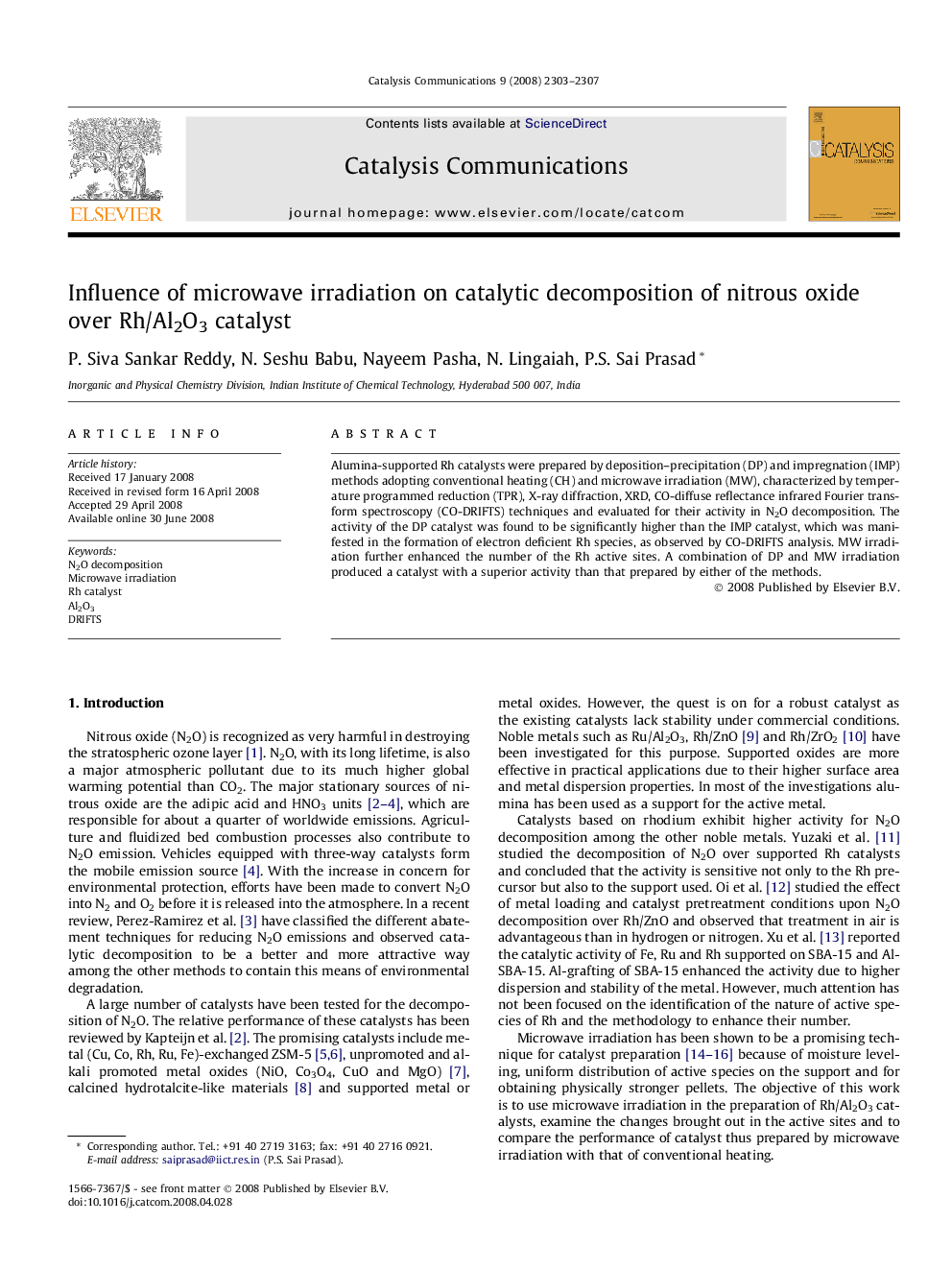| Article ID | Journal | Published Year | Pages | File Type |
|---|---|---|---|---|
| 51747 | Catalysis Communications | 2008 | 5 Pages |
Alumina-supported Rh catalysts were prepared by deposition–precipitation (DP) and impregnation (IMP) methods adopting conventional heating (CH) and microwave irradiation (MW), characterized by temperature programmed reduction (TPR), X-ray diffraction, XRD, CO-diffuse reflectance infrared Fourier transform spectroscopy (CO-DRIFTS) techniques and evaluated for their activity in N2O decomposition. The activity of the DP catalyst was found to be significantly higher than the IMP catalyst, which was manifested in the formation of electron deficient Rh species, as observed by CO-DRIFTS analysis. MW irradiation further enhanced the number of the Rh active sites. A combination of DP and MW irradiation produced a catalyst with a superior activity than that prepared by either of the methods.
